Deadly NC textile strike of 1929 serves to inspire new musical at UNC Charlotte
A tumultuous time in North Carolina history is serving as the inspiration for a new musical being developed at UNC Charlotte.
The show is called “Threads,” and it explores the deadly 1929 textile workers strike at the sprawling Loray Mill in Gastonia. Those events lasted months and captured the nation’s attention. They ended violently, too, with the murders of the local police chief and Ella May Wiggins, a mill worker and single mother raising five children.
Wiggins, who was white, worked 12-hour shifts six days a week at the nearby integrated American Mill No. 2 in Bessemer City. She had become a voice for the striking workers through her poignant protest ballads.
She’s also the central figure in the musical.
“This is an untold story in this community that I think is really timely and really important,” said UNC Charlotte assistant professor of musical theater, Laura Waringer, a co-director of the show. Many of its themes — labor rights, race relations, gentrification and feminism — will resonate with contemporary audiences, she said.
The production is part of a musical theater workshop taught by Waringer and assistant professor of classical and contemporary voice Sequina DuBose, also the co-director.
The work-in-progress will have two staged readings open to the public next month, at the university campus and at Loray Mill. The mill off S. Firestone Street is now a mixed-use property including apartments and an event space.
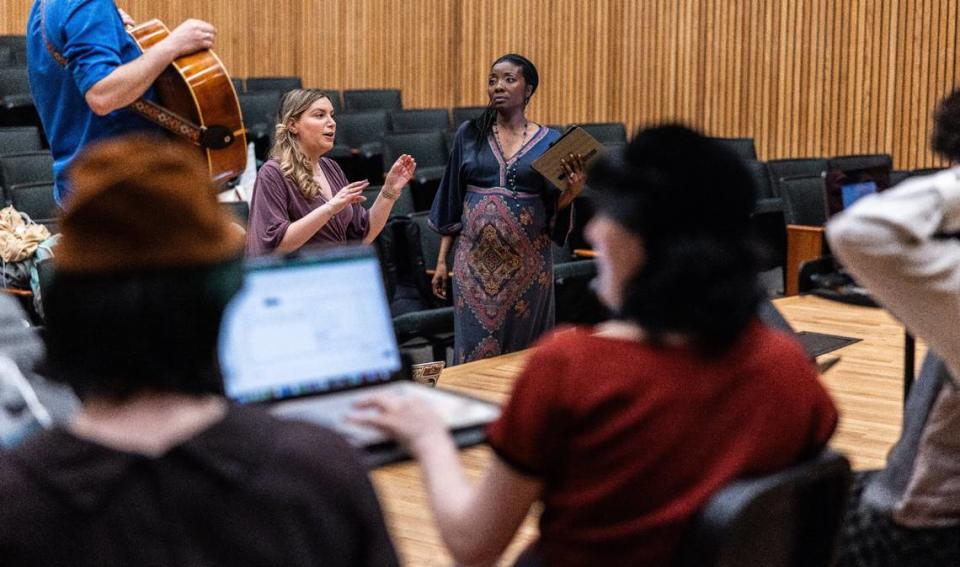
The origins of a musical
Waringer first heard about the Loray Mill strike at a faculty mixer for new hires in 2019.
She was telling a colleague about her research interests in developing site-specific productions and her group Wanderlust: Theater on Location, which transforms community stories into productions at historic sites, parks and other spaces rather than traditional theaters. That colleague was Meg Whalen, who oversees communications for the College of Arts + Architecture.
Whalen mentioned the mill strike as a potential story of interest. Her husband, historian Robert Whalen, had written a book related to the topic (“Like Fire in Broomstraw: Southern Journalism and the Textile Strikes of 1929-1931.)
Waringer thought the strike had strong potential as source material, especially since it had musical elements already built in through Wiggins’ ballads. “I kind of filed that away and then we had a pandemic, so theater kind of went away for a bit,” she said.
But when the university announced new grant opportunities on topics in the New South, Waringer and DuBose thought this would be the right time to commission local artists to create a new production and have students help develop it.
“Threads” received funding from a College of Arts + Architecture initiative supporting creative projects exploring the New South and global South. The musical also recently received a $20,000 Cultural Vision Grant from the Arts & Science Council.
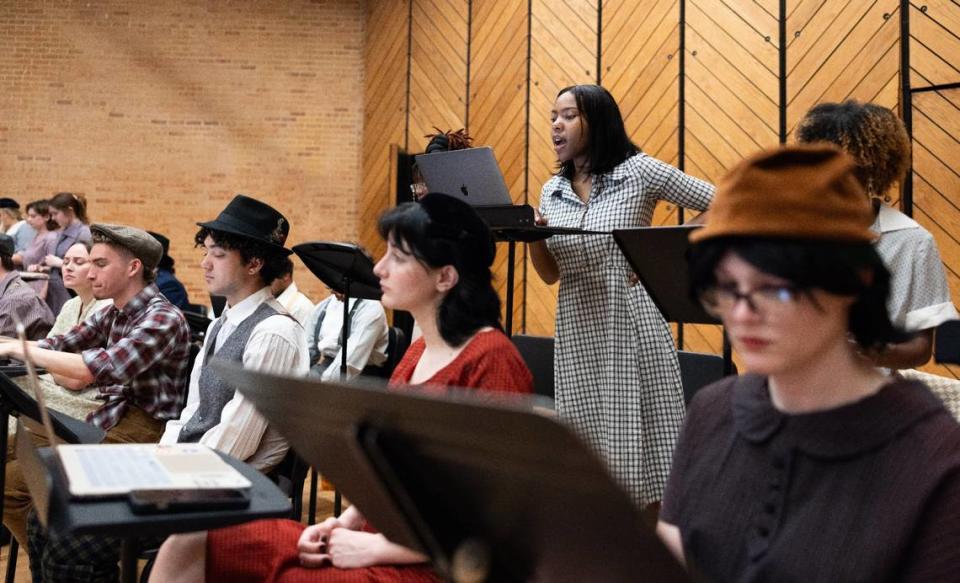
About the Loray Mill strikes
Robert Whalen is among several historians with whom the creative team has consulted. He told the Observer the Loray Mill strike “was a moment of high drama for the South, for North Carolina and for the country at large.”
Although labor actions were unfolding in other parts of the country, unions were fiercely opposed in the South, by then the country’s center of textile manufacturing.

The strike spurred local hysteria with fears of Communists and Northern activists organizing, working women and men taking to the streets, and Black and white laborers joining up, Robert Whalen said. The National Guard was called in and vigilantes roamed around too.
“There was deep fear that labor action would disrupt the whole segregation system,” he said. “And that could disrupt the whole system of influence and power and wealth in the South.”
Issues raised by the strikes, such as who has the right to organize in public spaces and some of the tactics, including protest songs, also would become key components of the Civil Rights movement, he added.
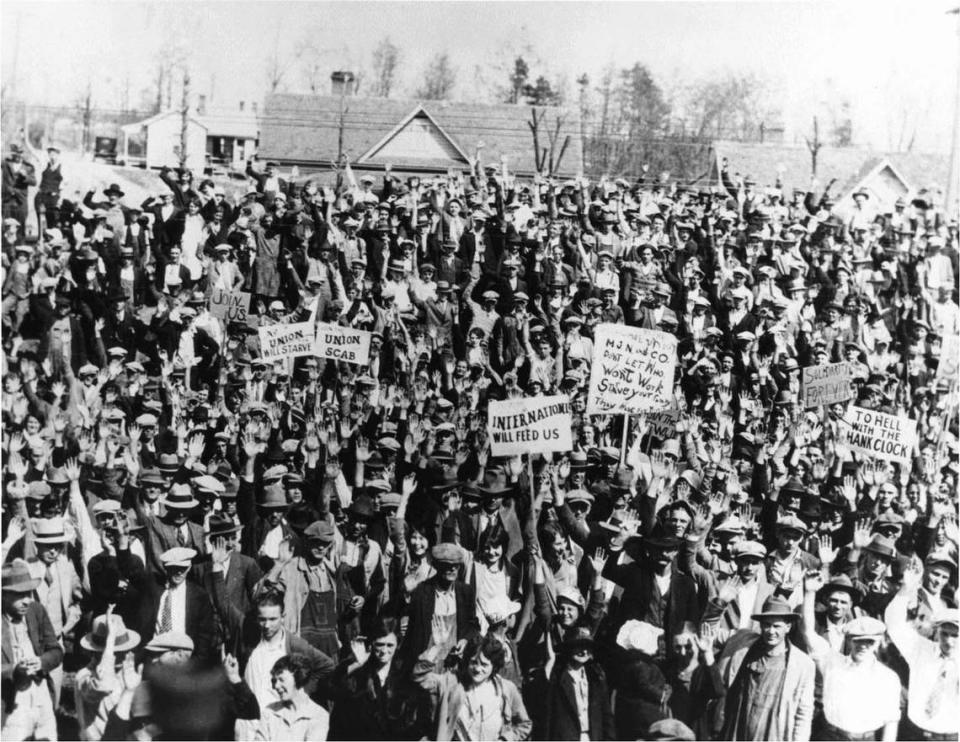
Creating an original musical
With “Threads,” students get to develop new material alongside all the creators. That includes the show’s composer, Mark Dillon, an award-winning folk musician and professor of songwriting at UNC Greensboro.
“We’ve always wanted to have a semester where we could bring in a composer for an artist residence and workshop a new work,” DuBose said.
Dillon’s score recreates styles from the era, including old-time string music, Piedmont blues and African-American gospel. The musical also includes Wiggins’ most famous ballad, “Mill Mother’s Lament” (which Pete Seeger covered decades later).
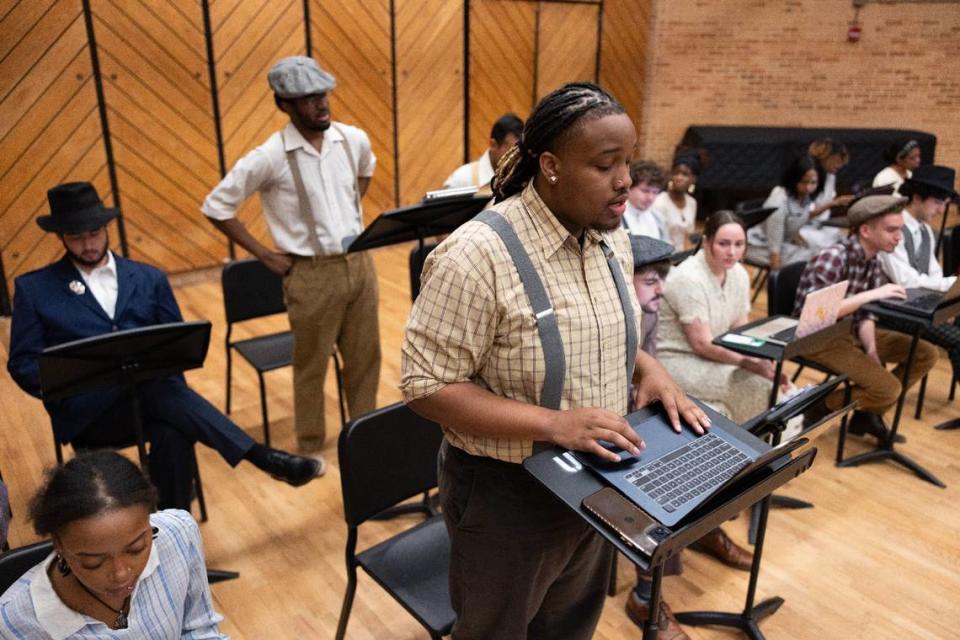
UNC Charlotte alumni and playwrights Raven Monroe and Stacey Rose, are also part of the creative team, writing the book of the musical and helping with some lyrics. Rose is co-founder of the Queen City New Play Initiative. Monroe’s work has been featured in festivals and received accolades in competitions.
At least one member of the creative team is in attendance at each rehearsal, as students learn what it’s like to collaborate on a new work.
“You’re the first person to ever say these words or sing these songs,” Waringer said. “There’s something so exciting about it being a living, breathing, open document.”
DuBose said that opportunity gives you the ability to set the standard for future performers and fix any issues that may emerge. “If something doesn’t work vocally or artistically, you’re able to actually consult with that person and get their sign off on any changes that you might want to make, on the spot,” she said.
Shortly after that conversation, The Charlotte Observer got a first-hand view of that process during a rehearsal.
One of the performers is visiting professor of costume design Margarette Joyner, who portrays Miss Ruth, a Black worker who toils alongside her young adult daughter at the mill. Joyner began singing “The Devil You Know,” a song recently added to the show, but was stymied by the low notes.
DuBose called out from the front row: “Can we change the key?”
Suddenly Joyner was experimenting a cappella, finding a new starting note that fit her voice better. About 30 seconds later, composer Dillon jumped up on stage, guitar in hand, strumming to match the new key.
Joyner’s voice rang out strong and clear, and the company adjusted, singing call and response to the gospel tune.
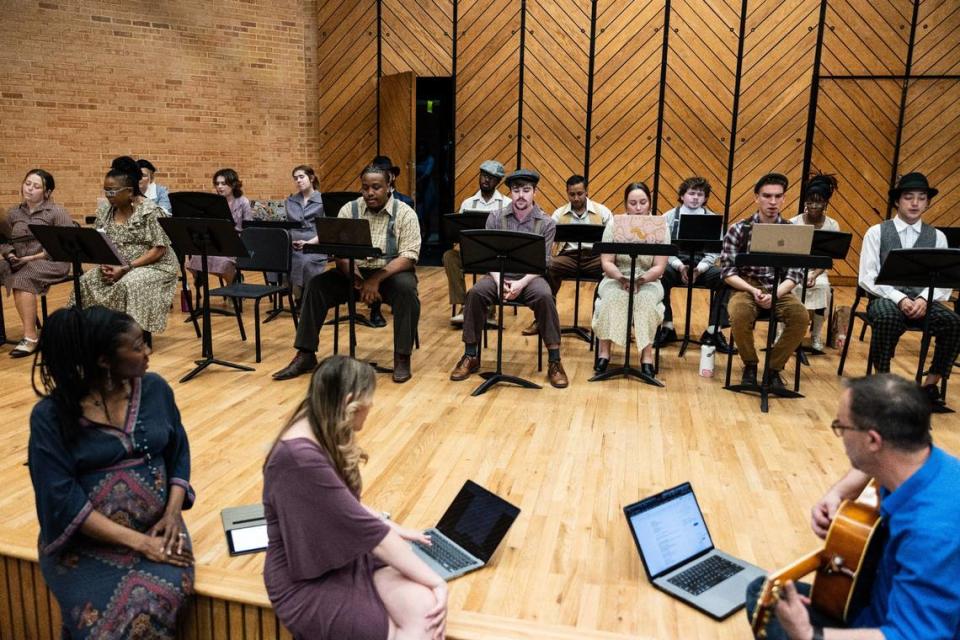
Uncovering untold stories
The project has given students the opportunity to dig deep into local history. They visited the mill and toured an exhibit there. They heard from Gaston County Museum historians, who shared insights on mill life in the era.
Students also conducted individual research on their characters, all of whom are based on real people.
One student used ancestry.com to locate his character’s descendants. Another found photos of a Gastonia home that’s still standing where one of the mill workers being portrayed lived.
The production has worked with the Charlotte Folk Society and connected with Kristina Horton, Wiggins’ great- granddaughter. She’s part of the Ella May Wiggins Memorial Committee, which is raising funds to erect a memorial sculpture at the mill.
DuBose said “Threads” allows students to highlight community groups that have been working to preserve folk music traditions and their history for a long time.
The musical also provides an opportunity to delve into little-explored stories, including those of Black mill workers.
Wiggins’ life provides an unusual lens because she was a white woman working at an integrated mill and living in a predominantly Black neighborhood. “She was able to navigate both of those worlds and both of those communities,” Waringer said.
Monroe, who grew up in Charlotte, said she regretted never learning about Wiggins before taking up this project.
“There’s so much rich history here that is just not being told,” she said. “And it’s so meaningful to be on a project where we’re getting to tell this story.”
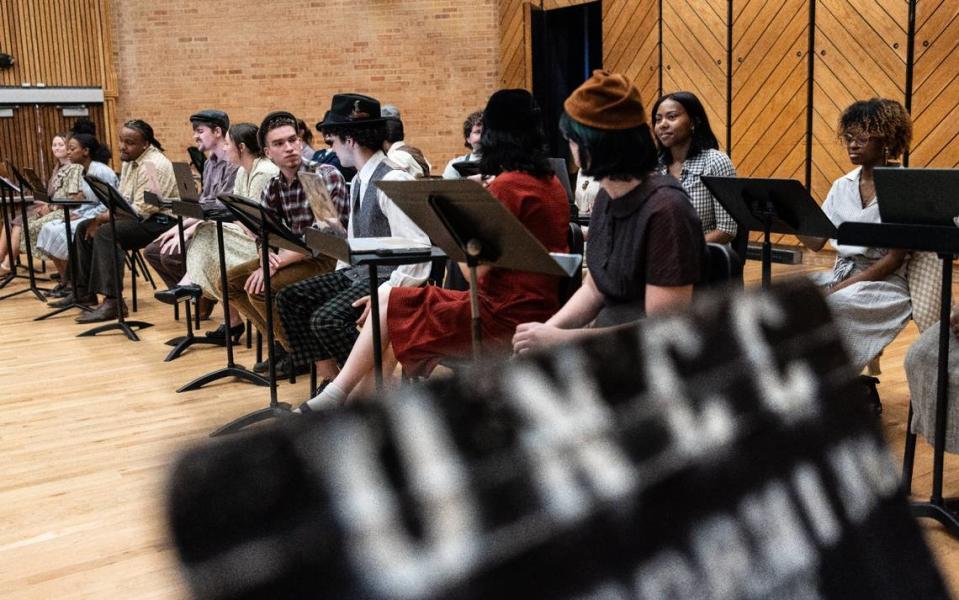
Want to go?
Work-in-progress staged reading of “Threads: A New Musical”
May 2 at 3 p.m., Rowe Recital Hall at UNC Charlotte; May 8 at 6:30 p.m., The Loray Mill, 300 S Firestone St., Gastonia, Admission is free.
More arts coverage
Want to see more stories like this? Sign up here for our free “Inside Charlotte Arts” newsletter: charlotteobserver.com/newsletters#navlink=subnav. And you can join our Facebook group, “Inside Charlotte Arts,” by going here: facebook.com/groups/insidecharlottearts.


